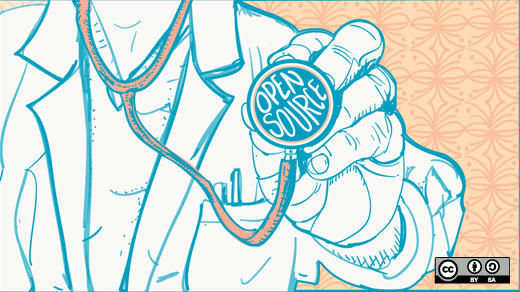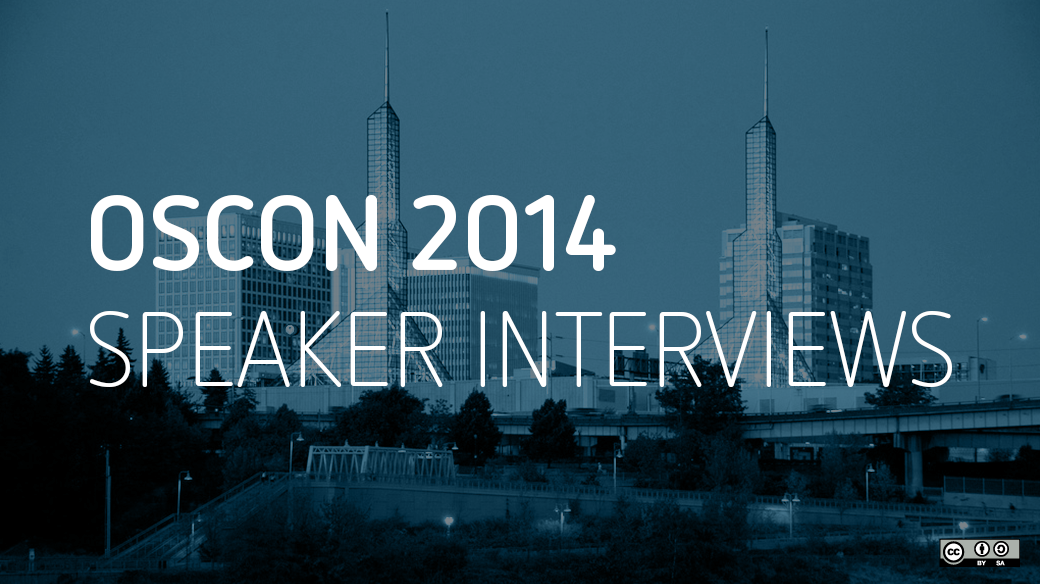Juhan Sonin wants to influence the world from protein, to policy, to pixel. And, he believes the only way to do that is with open source principles guiding the way.
Juhan is the Creative Director at Involution Studios, a design firm educating and empowering people to feel wonderful by creating, developing, and licensing their work for the public.
"We believe that any taxpayer funded effort should be made available, in its entirety, to be reused, modified, and updated by any citizen or business, hence the open source license. It should be a U.S. standard practice for contracted work."
One of their works is hGraph, a visual representation of your health status, designed to help you alter individual factors to improve it.
"Two companies are using hGraph in their clinical software. One offers corporate clinic-as-a-services (less than 1,000-person corporate campuses have clinics to serve employees), and an international pharmacy is launching hGraph to drive their next generation clinician and patient experience."
Read on in my interview with Juhan Sonin. Don't miss his talk at OSCON 2014, Design for Life.

You describe the coming wave of healthcare to be based on sensors that are tailored to our genome, non-invasive, and visible. This is where design comes in. How do you design applications that "feel wonderful"?
I always picture the orgasmatron from Woody Allen's movie, Sleeper (1973), which was set in the year 2173. This fictional device, a cylinder large enough to contain one or two people, rapidly induced orgasms. A character would walk in, have a blast, and walk out only seconds later. That’s how I want healthcare delivered. It needs to be fun. I want to think more about life and a lot less about "health" and "security."
Think about the current line-up of consumer health devices. They require massive mental and physical overhead to engage with, from remembering to wear it to switching it to night-time mode to taking it off during showers. They all suffer from the same issue: they’re a branch of devices called the "non-forgettables." By contrast, in-the-background, automatic health sensing lets us focus our consciousness on the dream life we want to live. The act of not thinking about my health and just enjoying life is one major way to make a service feel wonderful.
And that’s really what our work is all about: trying to create things that feel truly wonderful.
How do open source principles guide your design process? How do they hep you lead as Creative Director of Involution Studios?
Radical transparency is one of our studio’s core beliefs.
For us, radical transparency means
- open financials, where every staff has access to the corporate financial data
- open decision making, involving everyone as equals and participation in the studio’s future via everyday design, business, and technical decisions
- personal responsibility and integrity based on a public code of ethics that drives our behavior... through speaking the truth to ourselves and clients, learning together, and ultimately producing real, helpful, and beautiful solutions for Spaceship Earth
Our open design mission is that our designs (patterns, code, scripts, graphics, ideas, documents) will be available to any designer, to any engineer, to any world citizen, to use and modify without restriction.
Our code of ethics is public as well. We’re not perfect in every open source tenet, but we’re making progress.
What are the Health Axioms?
I had a cholesterol check a day after eating a lot of salami—this is not a joke, by the way—and it was like 350! Now thankfully that was not my real cholesterol but it got me interested in my health. So much of this is digital and tracking-related, but so much of it is old-fashioned, analog stuff. I think that is where a bigger impact can be made and was how I wanted to craft a solution. The Health Axioms are about daily care and attention to health in a distinctly physical format.
It’s about sitting down at the dinner table on Sunday nights, hopefully several nights a week, eating green peas, kale chips, and maybe fish or tofu (instead of beef). It’s how our mothers or grandmothers used to remind us about saying please and thank you, going outside to play, eating your veggies, and grabbing fresh herbs from the garden. But it’s also about reminding people about modern realities: put on your damn rubber! Don’t be stupid out there.
That’s where the Health Axioms fit in. It’s a deck of cards that helps people cut through the clutter and focus on clear, actionable advice that will impact your health and how we interact within the healthcare system. Each card has a single idea, one specific behavior we should concentrate on. The Health Axioms are graphic examples, using a visual story to communicate something important about your well-being.
Someone can buy and download or share, remix, and reuse Health Axioms. How are people consuming Health Axioms most often?
Doctors are using them to discuss key issues with patients and handing them out as daily reminders post-checkup. Three different clinical practices are currently leveraging them as part of everyday exams. Wall art is another outlet, where clinics are hanging large Health Axioms on the walls to inform discussions and remind patients and doctors alike of the 4-6 healthy behaviors we should engage in, such as...
- Get More Sleep
- Exercise is Medicine
- Food is Medicine
- Stop Smoking
- Examine Yourself
Next up is environmental graphics—imagine bigger-than-life-sized murals on hospital walls. We’re working on some great prototypes with a Boston clinic right now.
Do you think they have reached more people because they are licensed as Creative Commons? How has this affected your profits?
We make our ideas free. The Health Axioms are openly published on Flickr, GitHub, various forums, and our website. The CCv3 Attribution license has allowed our previous designs, photos, and documents to be viewed by millions and used on thousands of sites, which in turn has driven more business to the studio. We’re just five months into the Health Axioms’ life. It usually takes a year of getting the word out and community nurturing to begin to see results. However, we’re already seeing the engaged patient community lock onto them. Stanford Medicine X is highlighting the content. National Public Radio ran a story about them. It is wonderful to see but we have a long way to go.
Tell us about licensing the book, Inspired EHRs: Designing for Clinicians, under Apache 2.0?
It is a graphic whitepaper on designing user interfaces for electronic health records (EHRs), written for anyone who develops and implements health IT software, with a focus on those EHR vendor teams that want to dive more into human factors and design. By prototyping UI ideas, the interactive publication allows engineers and designers to snarf the code via GitHub, inject their own clinical data, and validate the ideas with their own teams and stakeholders, including clinicians and patients.
Completed as of July 1, 2014, the book is a global resource paid for by the non-profit California Healthcare Foundation, as well as the taxpayer funded Office of the National Coordinator for Health IT (ONC). Our position is that any taxpayer funded effort should be made available, in its entirety, to be reused, modified, and updated by any citizen or business, hence the open source license. It should be a U.S. standard practice for contracted work.
What is the big mission at Involution Studios? How did you choose open source as a method for creating, developing, and licensing your work?
As designers, we want our fingers, hands, and eyes on all the moving parts of a project, no matter how small or big. We want to influence the world from protein, to policy, to pixels. That means expanding our skills and knowledge to have impact at levels of science and society as well as design and engineering. That degree of immersion into problem solving and the holistic context of our clients enables us to make extraordinary impact, at a level that transcends the important issues of our clients but get into issues of meaning and the longer future.
And at some point in our careers, designers and engineers need to be involved in policy… in the crafting, in the designing, or development of guidelines or laws that drive how we as a people, operate together (or not). Some efforts are grassroots, like the Inspired EHR Guide, which starts with just a few people. This is attacking at the fringe, from the outside in. Data standards and policy-making and advising mafia (like HL7 or HIMSS) need good engineers and designers to participate. This is not super-sexy work. While the pace of sculpting governance is enormously slow (these kind of efforts take years and are often frustrating experiences), the ultimate outcome and impact can be long-lasting. And making this kind of change is why we’re in business.







1 Comment